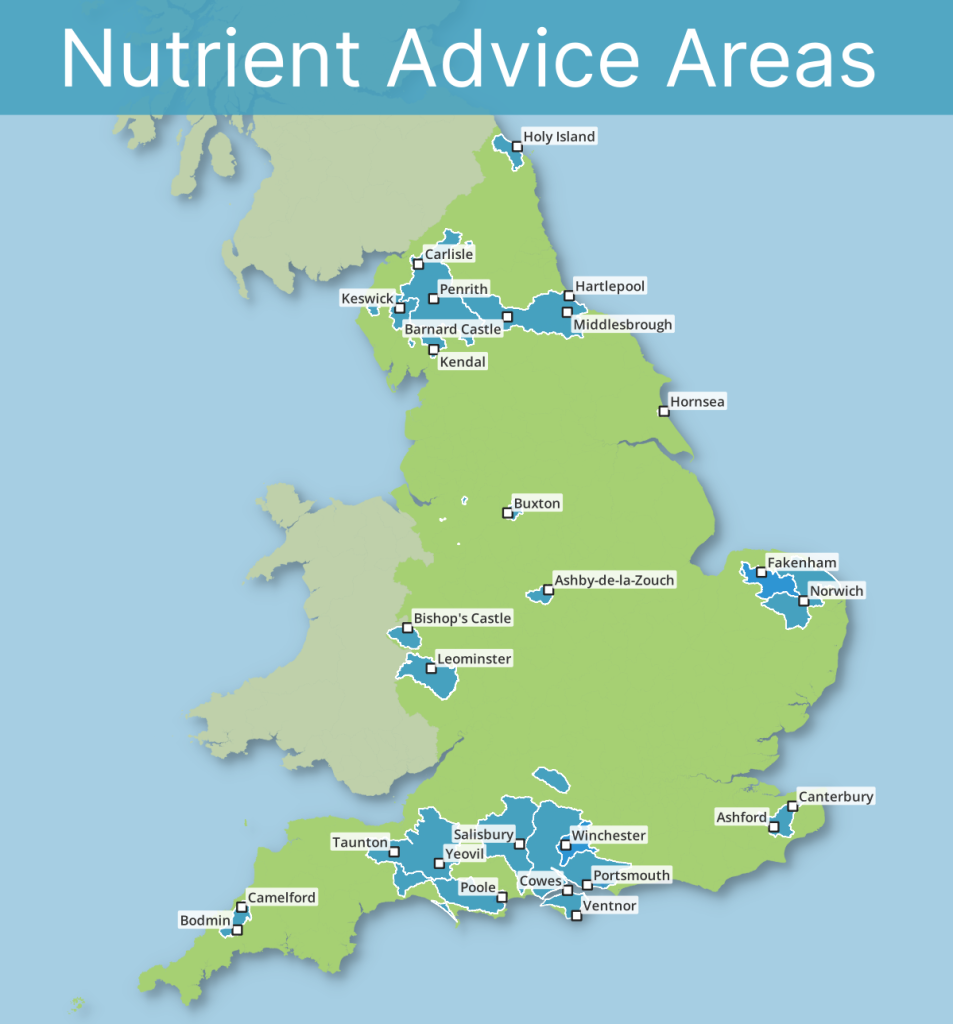Nutrient pollution is a big environmental issue for many of our most important places for nature in England. In freshwater habitats and estuaries, increased levels of nutrients (especially nitrogen and phosphorus) can speed up the growth of certain plants, impacting wildlife. This is called ‘eutrophication’ and it is damaging protected sites. As such, some sites are classified as being in ‘unfavourable condition’.
The sources of nutrients generally include sewage treatment works, septic tanks, livestock, arable farming and industrial processes. Where sites are already in unfavourable (poor) condition, extra wastewater from new housing developments can make matters worse.
By designing development alongside suitable mitigation measures, that additional damage can often be avoided. This approach is called ‘nutrient neutrality’. It essentially allows developments to be permitted without impacting on the condition of the important wildlife / protected sites.

What type of development needs to be nutrient neutral?
Nutrient neutrality is needed for overnight accommodation including new homes, student accommodation, care homes, tourism attractions and accommodation. The nutrient neutrality approach applies to proposals for a net increase in dwellings. Replacement dwellings are generally excluded.
So, campsites, glamping pods / holiday lets / shepherd’s huts etc are all included. This includes developments that propose to connect to the mains, off grid treatment works or composting toilets.
Other commercial development (not involving overnight accommodation) is generally not included, so nutrient neutrality does not apply to new schools, shops, offices etc.
Other applications will be considered on their individual merits, for example new industry, extensions to regional airports etc.
Does nutrient neutrality apply to the whole authority area?
It depends on the river catchment and the catchment boundaries for wastewater treatment works. The nutrient neutrality approach applies where the treated wastewater discharges into a sensitive catchment – either into the ground or surface water.
Check to see the extent of the sensitive river catchment and how much of the authority area is within this area, eg which towns, villages, ward boundaries.
The catchments for the wastewater treatment works also need checking. The catchment calculators include a list of the relevant wastewater treatment works (on the lookups tab). The river catchment and wastewater treatment work catchments can be different. Sometimes the waste from a development in one catchment is discharged into another catchment where nutrient neutrality applies. This is more likely to be the case when your development is located near the edge of the river catchment.
What legislation covers nutrient neutrality?
Many of our most internationally important water dependent places (lakes, rivers, estuaries, etc) are protected under the Conservation of Habitats and Species Regulations 2017 (as amended).
In accordance with this legislation, a Habitats Regulations Assessment (HRA) is needed for plans and projects that are likely to have a significant effect on the protected sites.
Natural England has included more information in their updated methodology.
In the short term….
Some councils will receive the advice from Natural England out of the blue, and it can be difficult to know what to do next. In the short term Council’s will put all applications on pause until they sort out their package of nutrient neutral measures.
Given that Natural England’s advice is being upheld by Inspectors and the High Court there is no mechanism available to prevent further spread of the issue beyond the 72 authorities already effected.
How can TPX help you on your schemes
TPX has launched a nutrient consultancy as part of our planning services. We can prepare a nutrient neutrality statement with the relevant calculations to be submitted with your application. We can also provide recommendations as to how you can mitigate the impact of nutrient neutrality on your development site.
If your interested in this service and would like to know more please email Dr Simon Coles at simoncoles@tpexpert.co.uk

